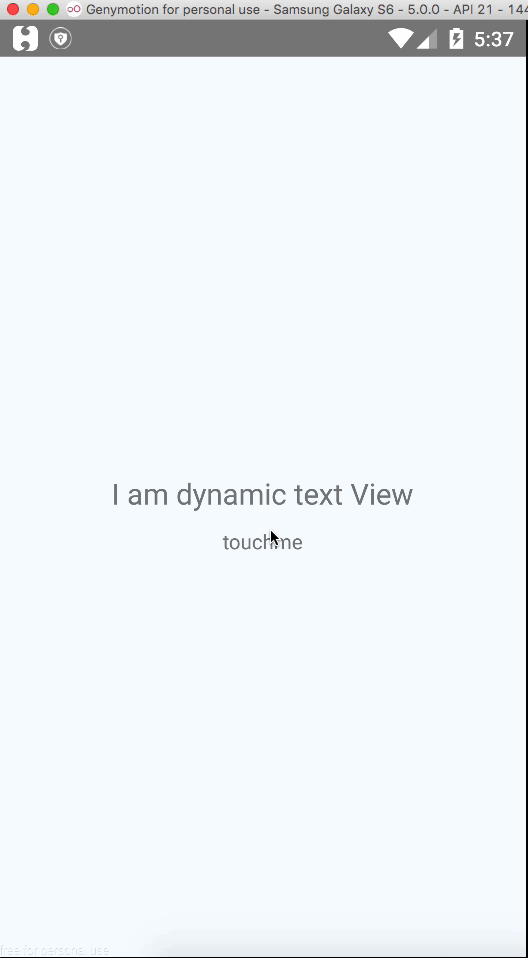Hide/Show components in react native
In your render function:
{ this.state.showTheThing &&
<TextInput/>
}
Then just do:
this.setState({showTheThing: true}) // to show it
this.setState({showTheThing: false}) // to hide it
I would do something like this:
var myComponent = React.createComponent({
getInitialState: function () {
return {
showCancel: false,
};
},
toggleCancel: function () {
this.setState({
showCancel: !this.state.showCancel
});
}
_renderCancel: function () {
if (this.state.showCancel) {
return (
<TouchableHighlight
onPress={this.toggleCancel()}>
<View>
<Text style={styles.cancelButtonText}>Cancel</Text>
</View>
</TouchableHighlight>
);
} else {
return null;
}
},
render: function () {
return (
<TextInput
onFocus={this.toggleCancel()}
onChangeText={(text) => this.doSearch({input: text})} />
{this._renderCancel()}
);
}
});
React Native's layout has the display property support, similar to CSS.
Possible values: none and flex (default).
https://facebook.github.io/react-native/docs/layout-props#display
<View style={{display: 'none'}}> </View>
In react or react native the way component hide/show or add/remove does not work like in android or iOS. Most of us think there would be the similar strategy like
View.hide = true or parentView.addSubView(childView)
But the way react native work is completely different. The only way to achieve this kind of functionality is to include your component in your DOM or remove from DOM.
Here in this example I am going set the visibility of text view based on the button click.

The idea behind this task is the create a state variable called state having the initial value set to false when the button click event happens then it value toggles. Now we will use this state variable during the creation of component.
import renderIf from './renderIf'
class FetchSample extends Component {
constructor(){
super();
this.state ={
status:false
}
}
toggleStatus(){
this.setState({
status:!this.state.status
});
console.log('toggle button handler: '+ this.state.status);
}
render() {
return (
<View style={styles.container}>
{renderIf(this.state.status)(
<Text style={styles.welcome}>
I am dynamic text View
</Text>
)}
<TouchableHighlight onPress={()=>this.toggleStatus()}>
<Text>
touchme
</Text>
</TouchableHighlight>
</View>
);
}
}
the only one thing to notice in this snippet is renderIf which is actually a function which will return the component passed to it based on the boolean value passed to it.
renderIf(predicate)(element)
renderif.js
'use strict';
const isFunction = input => typeof input === 'function';
export default predicate => elemOrThunk =>
predicate ? (isFunction(elemOrThunk) ? elemOrThunk() : elemOrThunk) : null;